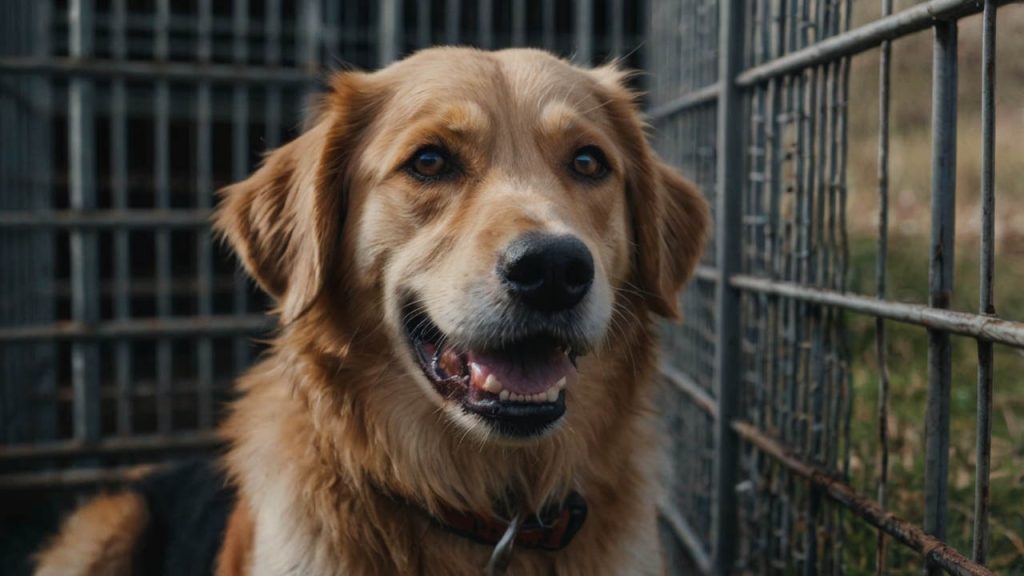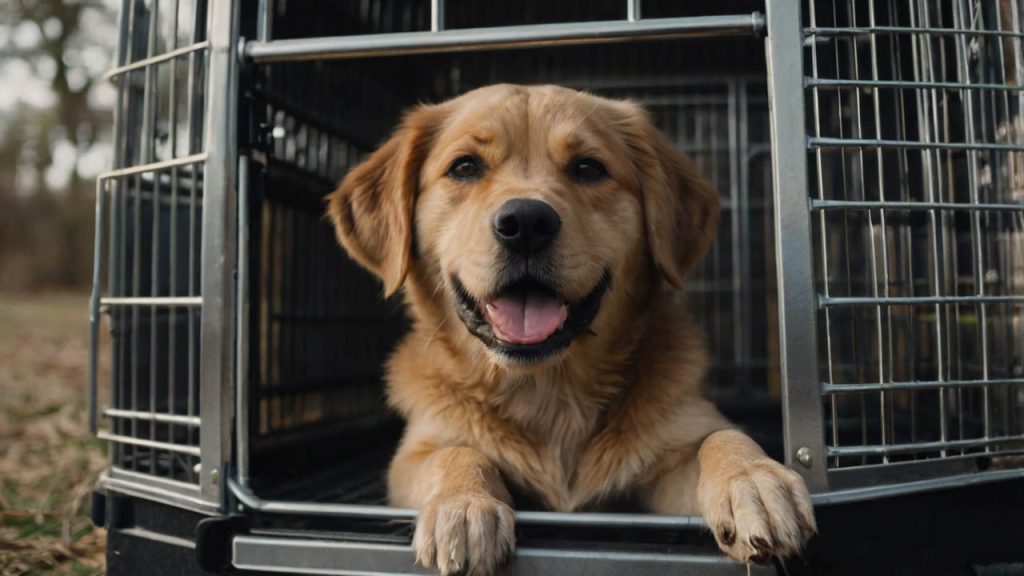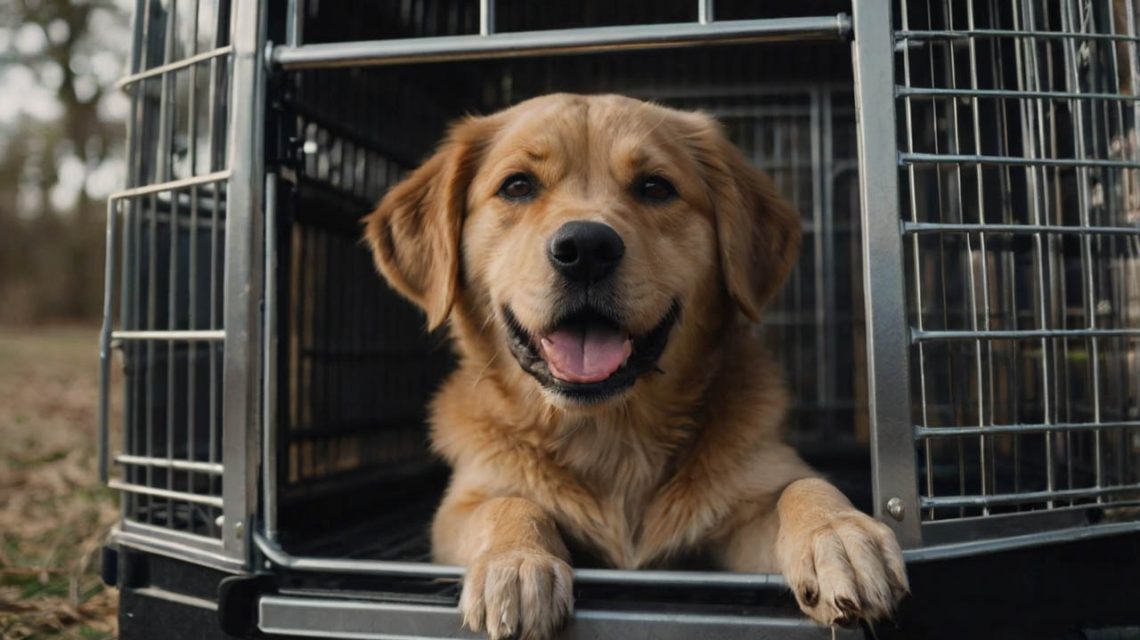Introduction: Mastering Adult Dog Crate Training
Learning how to crate train an adult dog successfully requires different strategies than puppy training, yet millions of owners achieve this goal every year with the right approach. According to the American Kennel Club, approximately 4 million adult dogs enter new homes annually through adoption or rehoming, with most requiring crate training for safety, travel, or behavioral management. Moreover, research from the Association of Professional Dog Trainers demonstrates that adult dogs can learn crate training at any age, typically mastering the skill within 2-8 weeks when owners apply consistent, positive methods.
The need to understand how to crate train an adult dog often emerges from various life situations including adoption of rescue dogs, moving to new homes, preparing for air travel, or managing recovery from medical procedures. Studies conducted by veterinary behaviorists at Tufts University reveal that 78% of adult dogs successfully adapt to crate training regardless of their previous experiences, though the timeline varies based on individual history and temperament. Furthermore, proper crate training provides adult dogs with secure personal spaces that reduce anxiety, prevent destructive behaviors, and facilitate house training reinforcement.
Successfully implementing how to crate train an adult dog acknowledges that mature dogs bring established behaviors, potential past experiences, and physical considerations that puppies lack. Each adult dog’s background, whether from shelters, previous homes, or your own household needing new routines, influences their crate training journey. Therefore, this comprehensive guide provides specialized techniques, practical schedules, and troubleshooting solutions designed specifically for adult dogs’ unique psychological and physical requirements.
Why Learning How to Crate Train an Adult Dog Matters
Benefits of Crate Training for Adult Dogs
Understanding how to crate train an adult dog provides essential life skills that benefit both dogs and owners throughout various situations. Crates offer safe havens where dogs can retreat during stressful events like parties, thunderstorms, or household disruptions. Subsequently, properly crate-trained dogs exhibit 50% fewer anxiety-related behaviors according to research published in the Journal of Veterinary Behavior.
Medical situations frequently necessitate crate confinement, making advance training invaluable for adult dogs. Post-surgical recovery, injury rehabilitation, or managing chronic conditions becomes significantly easier with established crate comfort. Furthermore, dogs familiar with crates experience less stress during veterinary stays, showing lower cortisol levels and faster recovery times.
Travel requirements make crate training essential for modern dog ownership. Airlines mandate crate familiarity for pet travel, while car safety experts recommend secured crates for accident prevention. Moreover, hotels and vacation rentals often require crated dogs, making this skill crucial for including pets in family adventures.

Addressing Adult Dog Challenges
Successfully navigating how to crate train an adult dog means overcoming unique obstacles not present in puppy training. Established sleeping preferences, such as bed or couch access, create resistance to crate confinement. Research indicates that adult dogs with ingrained habits require 2-3 times longer to accept new routines compared to puppies.
Previous negative experiences complicate crate training for many adult dogs, particularly rescues. Shelter dogs may associate crates with abandonment, while previously owned dogs might have experienced crates as punishment. Studies show that 35% of adult dogs require specialized desensitization protocols to overcome crate-related trauma.
Physical limitations in adult dogs demand special considerations during crate training. Arthritis affects 20% of adult dogs, requiring orthopedic support and easy-access crate designs. Additionally, larger adult dogs need appropriately sized crates immediately, unlike puppies who grow into adult-sized spaces.
How to Crate Train an Adult Dog: Essential Preparation
Selecting the Perfect Crate
Choosing appropriate equipment when learning how to crate train an adult dog significantly impacts training success. Size selection proves critical—crates must allow standing, turning, and lying down comfortably without excess space that encourages elimination. Subsequently, measuring your dog’s height and length ensures proper fit without multiple purchases.
Material options vary based on individual dog needs and home aesthetics. Wire crates provide maximum ventilation and visibility, benefiting dogs who feel less confined with open views. Plastic crates offer den-like security preferred by anxious dogs, while furniture-style crates seamlessly integrate into home décor.
Special features enhance comfort for adult dogs with specific needs. Double doors provide flexible placement options in various room configurations. Furthermore, divider panels help with house training by limiting space, while removable trays simplify cleaning for house training accidents.
Creating an Inviting Environment
Beginning how to crate train an adult dog requires establishing positive associations before any confinement attempts. Position crates in family areas where dogs naturally spend time, avoiding isolated locations that feel like banishment. Moreover, initially remove or secure doors open to prevent accidental closure that might frighten hesitant dogs.
Comfort elements make crates appealing to adult dogs accustomed to sofas or beds. Quality bedding appropriate for your dog’s age and joint health provides necessary support. Additionally, familiar items like favorite blankets or toys carrying your dog’s scent create ownership feelings.
Strategic placement of high-value items builds crate attraction naturally. Hide special treats that appear mysteriously when dogs aren’t watching. Furthermore, feeding meals progressively closer to, then inside crates creates powerful positive associations with the space.
Step-by-Step Guide: How to Crate Train an Adult Dog
Week 1: Introduction and Exploration
Starting how to crate train an adult dog begins with completely pressure-free introduction. Scatter treats around the crate exterior, rewarding any investigation or interest. Gradually place treats closer to the entrance, then just inside, celebrating brave exploration without forcing entry.
Mealtime becomes your most powerful training tool during initial phases. Begin feeding regular meals near the crate, moving bowls progressively closer over several days. By week’s end, most dogs eagerly enter crates for meals, though doors remain open throughout.
Brief, positive interactions build confidence more effectively than prolonged sessions. Conduct 5-10 mini training sessions daily, each lasting 2-3 minutes maximum. Furthermore, always end sessions while dogs remain relaxed and interested, preventing negative associations from frustration or boredom.
Week 2: Building Comfort and Duration
Advancing how to crate train an adult dog involves gradually increasing voluntary time inside. Continue meal feeding in crates, now gently closing doors while dogs eat. Initially, open doors immediately upon meal completion, gradually extending closure by 30-second increments.
Interactive enrichment keeps dogs contentedly occupied during longer crate periods. Stuff Kong toys with peanut butter, freeze them for extended enjoyment. Moreover, puzzle feeders or lick mats provide mental stimulation that creates positive crate associations.
Distance training begins once dogs remain calm with closed doors. Start by stepping one foot away, immediately returning with praise and treats. Subsequently, gradually increase distance and duration, building to leaving the room briefly while maintaining visual contact.
Week 3-4: Establishing Routine
Mastering how to crate train an adult dog requires integrating crates into daily schedules. Establish specific crate times coinciding with natural rest periods or household routines. Additionally, consistent scheduling helps dogs anticipate and accept crate time as normal daily occurrences.
Departure training prevents separation anxiety development. Practice putting dogs in crates before actual departures, starting with mock leave-takings. Furthermore, vary crate duration to prevent anticipation anxiety about absence length.
Nighttime crating often represents the final frontier for adult dogs. Many resist giving up established sleeping arrangements initially. Therefore, consider placing crates in bedrooms initially, gradually moving to permanent locations once comfort develops.
Advanced Strategies: How to Crate Train an Adult Dog
Troubleshooting Common Issues
Excessive vocalization frustrates owners learning how to crate train an adult dog in apartments or close quarters. Distinguish between demand barking and distress vocalizations—ignoring attention-seeking while addressing genuine anxiety. Research shows that responding to demand barking increases the behavior in 95% of cases.
Escape attempts indicate rushed training or underlying anxiety requiring protocol adjustment. Dogs injuring themselves need immediate training modification, possibly including different crate styles or professional consultation. Moreover, addressing root causes prevents escalation to severe anxiety disorders.
Elimination in crates suggests several possible issues requiring different solutions. Medical problems need veterinary attention before continuing training. Additionally, ensure crates aren’t too large, adjust feeding/watering schedules, and increase bathroom breaks for senior dogs.
Special Techniques for Rescue Dogs
Understanding how to crate train an adult dog from shelters requires acknowledging potential trauma. Many rescue dogs spent excessive time crated in shelters, developing negative associations. Subsequently, these dogs need extended desensitization periods using especially high-value rewards.
Building trust precedes crate introduction for fearful rescue dogs. Spend weeks establishing general confidence through positive training before introducing crates. Furthermore, forcing traumatized dogs into crates can trigger panic responses that set training back months.
Alternative approaches help severely crate-averse dogs. Start with exercise pens or baby-gated areas as stepping stones toward crate acceptance. Additionally, some dogs benefit from completely different crate styles than those associated with negative experiences.

Optimizing Success: How to Crate Train an Adult Dog
Creating Positive Associations
Implementing how to crate train an adult dog successfully depends on building powerful positive connections. Reserve special treats exclusively for crate training, creating anticipation and excitement. Moreover, vary rewards to maintain interest—alternating between food treats, praise, and play rewards.
Games make crate training enjoyable rather than obligatory. Play “find it” games hiding treats in crates for dogs to discover. Furthermore, teach “crate” commands as tricks, rewarding enthusiastic crate entries with celebration.
Calm energy from owners significantly impacts training success. Dogs detect and mirror human emotions, making relaxed attitudes essential. Additionally, avoid using crates for punishment or time-outs, which destroys carefully built positive associations.
Schedule Optimization
Structuring how to crate train an adult dog around natural rhythms improves compliance. Adult dogs typically rest 12-14 hours daily, providing multiple crate opportunities. Subsequently, scheduling crate time during natural rest periods meets dogs’ biological needs.
Work schedules require strategic crate training timing. Practice weekend crating mimicking weekday schedules before implementing actual work-day confinement. Moreover, lunch breaks or dog walkers prevent excessive crate duration for full-time workers.
Gradual duration increases prevent overwhelming adult dogs. Start with 30-minute sessions, adding 15 minutes weekly until reaching necessary duration. Furthermore, maximum crate time shouldn’t exceed 4-6 hours for adult dogs except overnight.
Long-Term Management Strategies
Maintaining Crate Training Success
Sustaining achievements when mastering how to crate train an adult dog requires ongoing reinforcement. Continue occasional treat surprises in crates maintaining positive associations. Furthermore, practice brief crate sessions even when unnecessary, preventing skill deterioration.
Flexibility helps adult dogs generalize crate comfort. Use crates in different rooms or situations like car travel. Additionally, portable crates during visits or vacations maintain familiar safe spaces in unfamiliar environments.
Age-related adjustments keep senior dogs comfortable in crates. Add orthopedic bedding as dogs age, addressing developing joint issues. Moreover, consider ramps for elevated crates as mobility decreases with advancing age.
Transitioning to Freedom
Graduating from mandatory crating represents ultimate success in how to crate train an adult dog. Begin testing reliability with brief unsupervised freedom while you’re home. Subsequently, gradually extend free-roaming privileges based on trustworthy behavior.
Many adult dogs continue choosing crates as preferred resting spots after training. Leave crates accessible as voluntary retreats even after achieving house reliability. Furthermore, maintained crate comfort proves invaluable during future medical needs or travel.
Emergency preparedness benefits from maintained crate training. Natural disasters or evacuations proceed smoothly with crate-trained dogs. Additionally, unexpected hospitalization or boarding becomes less stressful for crate-comfortable dogs.
Professional Support and Resources
When to Seek Expert Help
Certain situations when learning how to crate train an adult dog require professional intervention. Severe anxiety, aggression, or self-injury attempts need immediate expert assessment. Moreover, certified dog trainers or veterinary behaviorists provide customized protocols for challenging cases.
Medical evaluations should precede training for adult dogs showing unusual resistance. Pain, cognitive dysfunction, or other health issues may manifest as training difficulties. Furthermore, addressing underlying medical problems dramatically improves training success rates.
Group classes offer structured learning environments for crate training. Professional supervision helps identify and correct technique errors early. Additionally, seeing other dogs successfully using crates provides powerful modeling for hesitant dogs.
Technology and Training Aids
Modern tools assist owners implementing how to crate train an adult dog effectively. Pet cameras allow remote monitoring and two-way communication during absences. Subsequently, owners can reward calm behavior or provide reassurance without returning home.
Calming aids support anxious adult dogs during crate training. Pheromone diffusers, calming music, or anxiety wraps reduce stress during training. Research shows 70% of dogs benefit from multi-modal calming approaches during crate training.
Training apps help track progress and maintain consistency. Digital logs document training sessions, duration progress, and behavioral observations. Moreover, reminder notifications ensure consistent training schedules despite busy lifestyles.
Success Stories: How to Crate Train an Adult Dog
Real-World Transformations
Max, a 5-year-old rescue Labrador, exemplifies successful adult dog crate training despite initial challenges. Severe shelter trauma caused panic attacks when approaching crates initially. Through patient desensitization over 12 weeks, Max now voluntarily naps in his crate daily, even choosing it over the sofa during thunderstorms.
Bella, a 7-year-old Beagle, needed crate training after her owner’s work schedule changed. Despite never using crates previously, Bella adapted within three weeks through positive reinforcement. Her success inspired her owner to document the journey on social media, helping thousands of other adult dog owners.
Charlie, a 10-year-old German Shepherd, required crate training for cross-country moving. His owner’s systematic approach achieved reliable crate comfort in four weeks. The successful move without anxiety medication demonstrated crate training’s value for senior dogs.
Expert Insights
Professional trainer Victoria Stilwell emphasizes that how to crate train an adult dog succeeds through patience and consistency. Her experience training thousands of adult dogs shows that age poses no barrier when using positive methods. Moreover, she notes adult dogs often train more reliably than puppies once comfortable.
Veterinary behaviorist Dr. Karen Overall stresses medical evaluation before training adult dogs. Her research reveals that 30% of training “failures” stem from undiagnosed medical issues. Furthermore, she advocates for integrated approaches combining environmental management, training, and medical support when needed.
Certified trainer Pat Miller highlights the importance of respecting individual timelines. Some adult dogs master crate training in days, while others need months. Additionally, she emphasizes celebrating small victories throughout the training journey.
Conclusion: Your Success Path Forward
Mastering how to crate train an adult dog opens doors to enhanced safety, reduced anxiety, and greater freedom for both you and your canine companion. Throughout this comprehensive guide, you’ve discovered that adult dogs can successfully learn crate training at any age when approached with patience, consistency, and positive reinforcement. The journey may require more time than puppy training, but the benefits—from travel convenience to emergency preparedness—make the investment worthwhile.
Remember that every adult dog brings unique experiences, preferences, and learning speeds to crate training. Some embrace crates within days, while others need weeks or months of gradual acclimation. Your commitment to positive methods, respect for your dog’s individual pace, and consistency in training approach determines ultimate success.
Take action today by selecting an appropriate crate and beginning with simple positive associations. Start with just five minutes of treat-scattering near the crate, celebrating any interest your dog shows. Most importantly, approach how to crate train an adult dog as a journey of trust-building and communication, knowing that your patient efforts will provide your adult dog with a valuable life skill and safe haven for years to come.


